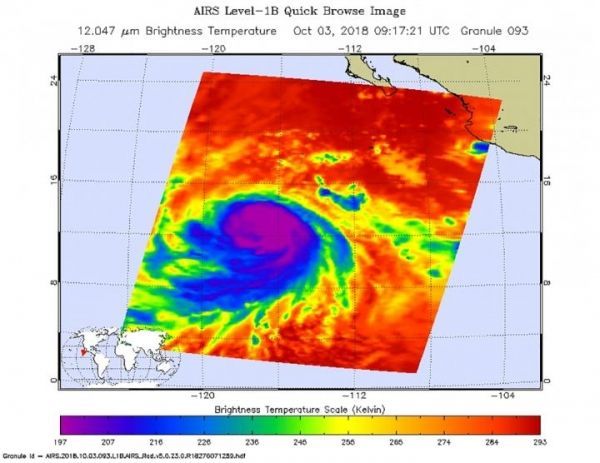Infrared light provides scientists with temperature data and that’s important when trying to understand the strength of storms. NASA’s Aqua satellite provided those cloud top temperatures of Category 4 Hurricane Sergio in the Eastern Pacific Ocean.
The Atmospheric Infrared Sounder or AIRS instrument aboard NASA’s Aqua satellite passed over Hurricane Sergio on Oct. 3 at 5:17 a.m. EDT (0917 UTC) and analyzed the storm in infrared light. The higher the cloud tops, the colder and the stronger the storms. Infrared light as that gathered by the AIRS instrument can identify the strongest sides of a tropical cyclone.
AIRS temperature data showed Sergio had intensified that morning, with the eye becoming better defined while embedded in very cold cloud tops. AIRS detected those very cold cloud tops were as cold as or colder than 207 Kelvin (minus 87 degrees Fahrenheit/minus 66.1 degrees Celsius). Storms with cloud top temperatures that cold have the capability to produce heavy rainfall.
Read more at NASA/Goddard Space Flight Center
Image: The AIRS instrument aboard NASA's Aqua satellite passed over Hurricane Sergio on Oct. 3 at 5:17 a.m. EDT (0917 UTC) and analyzed the storm in infrared light. AIRS detected strongest storms (purple) around the eye where cloud top temperatures were as cold as or colder than 207 Kelvin (minus 87 degrees Fahrenheit/minus 66.1 degrees Celsius). (Credit: NASA JPL, Heidar Thrastarson)


